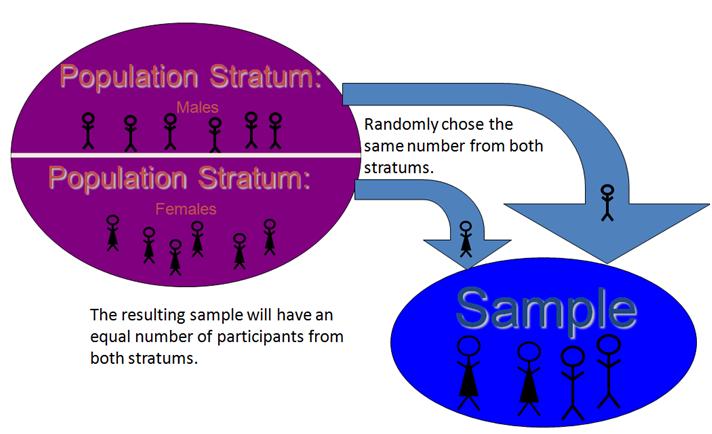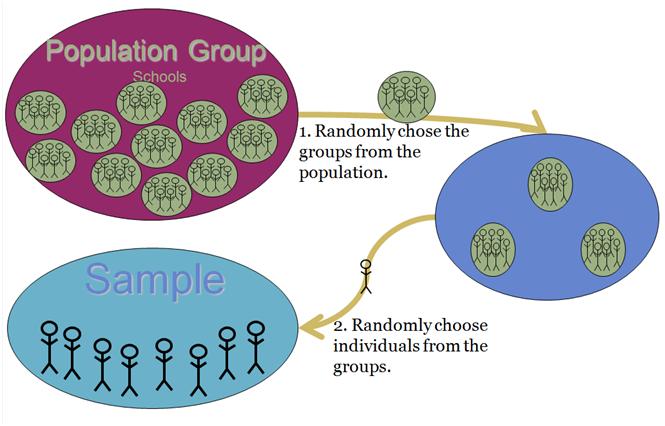
It is virtually impossible to study every individual in the target population. In most cases, the target population, such as students in JS1, is simply too large for the researcher to plan a quality research study. Collecting millions of questionnaires from every JS1 student would present the following challenges:
The theory of sampling is as follows:
The analogy of a fruit market can be used when thinking about the population, the sample, and the sampling technique. The first step in sampling is to identify the unit of analysis. This was described in Chapter 11, Identify the Population. Let's say that you are conducting research related to a fruit market. What will be studied in the fruit market? Is it a type of fruit or the fruit sellers themselves? Let's say you identify citrus fruit as the unit of analysis, and your population is all citrus fruit within the Bauchi Road fruit market. There are too many pieces of citrus fruit for you to study in that market, so you must select only a sample of the citrus fruit.
A common error in sampling is that the sample and population are not identical. For example, the sample may be too narrow. If the population is all citrus fruit within the Bauchi Road fruit market, then the sample cannot only consist of lemons because your sample would be missing oranges, grapefruit, and limes. Therefore, you must find a way of selecting a representative sample of citrus fruit from your population. To apply to an educational study, perhaps one may say that the population is all university students, but only university students in public schools are sampled.
Another common error is to make the population too broad. Some may say that the population is all mangoes in the Bauchi Road fruit market, but they are really only interested in green mangoes. If only green mangoes are of interest, then the population should be green mangoes in the Bauchi Road fruit market. In educational research, sometimes researchers are only interested in a population with a certain characteristic, such as student who has not chosen a career (in the case of career counseling). Thus, the population and sample must be the same.

Before selecting a sampling procedure, first consider the following:
There are many sampling procedures that have been developed to ensure that a sample adequately represents the target population. A few of the most common are described below.
Simple Random Sampling
In simple random sampling, every individual in the target population has an equal chance of being part of the sample. This requires two steps:
Another factor to consider is the word random. Random is a technical term in social science research that means that selection was made without aim, reason, or patterns. If any study uses the word random, it means that specific scientific procedures were used to ensure that the sample was selected purely by chance. Scientists have developed a few procedures that must be followed for a study to achieve random, such as the hat-and-draw method or a random number table. To be random, participants cannot be chosen because of their intelligence, gender, social class, convenience, or any other factor besides scientifically-agreed upon random procedures. Using the word random when the unit of analysis was not selected by the hat-and-draw method or a random number table is either irresponsible or flat-out untruthful.

Stratified Random Sampling
In stratified random sampling, the researcher first divides the population into groups based on a relevant characteristic and then selects participants within those groups. In educational research, stratified random sampling is typically used when the researcher wants to ensure that specific subgroups of people are adequately represented within the sample. For example, a research study examining the effect of computerized instruction on maths achievement needs to adequately sample both male and female pupils. Stratified random sampling will be used to ensure adequate representation of both males and females. Stratified random sampling requires four steps:

Purposive Sampling
In purposive sampling, the researcher uses their expert judgment to select participants that are representative of the population. To do this, the researcher should consider factors that might influence the population: perhaps socio-economic status, intelligence, access to education, etc. Then the researcher purposefully selects a sample that adequately represents the target population on these variables.
Multi-Stage Sampling
More frequently, educational researchers use multi-stage sampling. In multi-stage sampling, the sample is selected in multiple steps, or stages. For example, in the first stage, geographical regions, such as local government areas, are selected. In the second stage, perhaps schools may be selected. In the third stage, the unit of analysis - perhaps teachers or students, are sampled. If the unit of analysis is not selected in the first step, then the sampling procedure is multi-stage sampling. In multi-stage sampling, other sampling techniques may be used at the different stages. For example, the first stage may use random sampling, the second stage may use purposive sampling, and the third stage may use stratified sampling.
The steps in multi-stage sampling are as follows:

Recall that the key question in sampling is How representative is the sample of the target population? Therefore, the researcher has the burden of demonstrating in their report (primarily in the methods section) that their sample, regardless of how it was chosen, represents the target population. Simple random sampling or multi-stage sampling will typically answer this question the best. However, as long as the researcher makes a convincing argument in their methods section that their sample adequately represents the target population, the researcher really can use any available sampling procedure.
Return to Educational Research Steps
Copyright 2012, Katrina A. Korb, All Rights Reserved